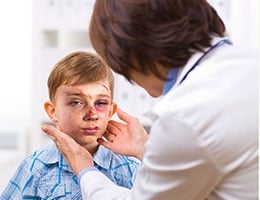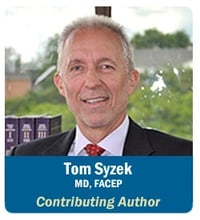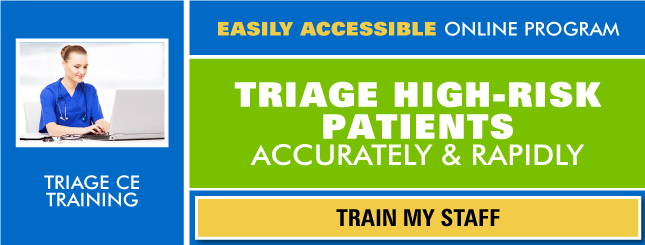
[4 MIN READ]
Child physical abuse exists in all corners of the country and affects children of all ages, ethnicities, and socioeconomic groups.
Consider the following facts:
- More than 2 million reports of suspected child maltreatment are investigated each year in the United States. These reported cases represent only a fraction of the abuse that children experience.
- Child maltreatment includes neglect and abuse that may be physical, sexual, emotional, or psychological.
- There are more than 650,000 substantiated cases of child maltreatment annually.
- About 18% of child maltreatment involves physical abuse.
- More than 1,500 children die each year due to abuse or neglect. 80% of these deaths are children under 4 years old.
- The incidence of child abuse is underestimated since 17% of adults in the U.S. report that they were physically abused as a child.
Risk Factors for Child Physical Abuse
Many factors have been identified that increase the risk of child maltreatment and physical abuse. The mere presence of risk factors does not mean that a given child will be abused, but instead should play a role in our efforts to prevent abuse and raise our awareness to detect and intervene in cases of suspected abuse.
There are characteristics of a child that increase the risk for maltreatment, including emotional or behavioral difficulties, chronic illness, physical disabilities, developmental disabilities, preterm birth, unwanted child, and unplanned pregnancy. Boys are slightly more likely to experience physical abuse than girls. Infants and toddlers are in the age group most likely to experience severe and fatal physical abuse. Children with episodes of prior reported abuse are predisposed to subsequent abusive death.
 Parental features that place a child at greater risk for maltreatment include low self-esteem, poor impulse control, substance abuse, young parental age, unmarried mother, maternal smoking, parent abused as a child, mental illness, poor knowledge of child development, and negative perception of normal child behavior.
Parental features that place a child at greater risk for maltreatment include low self-esteem, poor impulse control, substance abuse, young parental age, unmarried mother, maternal smoking, parent abused as a child, mental illness, poor knowledge of child development, and negative perception of normal child behavior.
There are factors in a child’s environment that are associated with a higher risk for maltreatment; these include poverty, social isolation, unemployment, single parent, low educational achievement, unrelated adult male living in the home, and intimate partner violence. Children in military families are at higher risk for maltreatment, especially during deployments.
Consequences of Child Abuse
The consequences of child abuse are profound and can persist for a lifetime. More studies are showing that child abuse adversely affects brain function, the immune system, and neuroendocrine responses to stress. The long-term effects of child abuse can be manifest physically, mentally, emotionally, and behaviorally.
- Child abuse is associated with adult physical and mental health diseases.
- Abused adolescents have high rates of depression, conduct disorder, and drug abuse.
- Severe physical abuse, such as abusive head trauma, can result in permanent neurologic disability and developmental and cognitive delay.
- Physical abuse can cause permanent disfigurement.
- Abused children are at higher risk for developing behavioral problems at home and in school.
The Role of Healthcare Professionals
Practitioners in primary care, particularly Pediatrics and Family Medicine, are uniquely poised to not only detect, but also to prevent child abuse. In addition to primary care, practitioners in other acute-care specialties and environments bear the responsibility for early identification and reporting of suspected child abuse. These practice environments include emergency departments, urgent care centers, and clinics.
How to Recognize Child Abuse
The recognition and identification of child abuse is not an easy task. Not all practitioners are aware of the risk factors for abuse nor are they knowledgeable regarding the sentinel injuries that represent the tip of the child abuse iceberg. Consider that 25% of abused infants and one-third of children with abusive head trauma have experienced a prior sentinel injury such as bruises, intra-oral injuries, or fractures. The failure to recognize a sentinel injury in an abused child results in subsequent abuse and fatality in a significant percentage of child abuse cases.
Factors That Reduce the Risk of Child Abuse
On the positive side, there are factors and features of a child, a parent, or the environment that are known to lower the risk of child abuse; these include parental resilience, parent knowledge of child development and parenting, concrete support in times of need, social connections, and a child’s ability to form positive relationships. Organizations capitalize on these known factors to develop family and community programs to prevent child abuse. Prevent Child Abuse America is a national non-profit organization “dedicated to promoting services that improve child well-being in all 50 states and developing programs that help to prevent all types of abuse and neglect.”
I find that most blog topics lend themselves to at least a small degree of light-heartedness or humor, but not this one. There is nothing evenly remotely funny about child abuse. There is nothing amusing about our most vulnerable population – infants and children – suffering from abuse that is intentionally inflicted. It is incumbent upon all of us, particularly in the healthcare community, to raise our awareness of this important issue and then act to prevent, identify, and intervene on behalf of America’s children.


